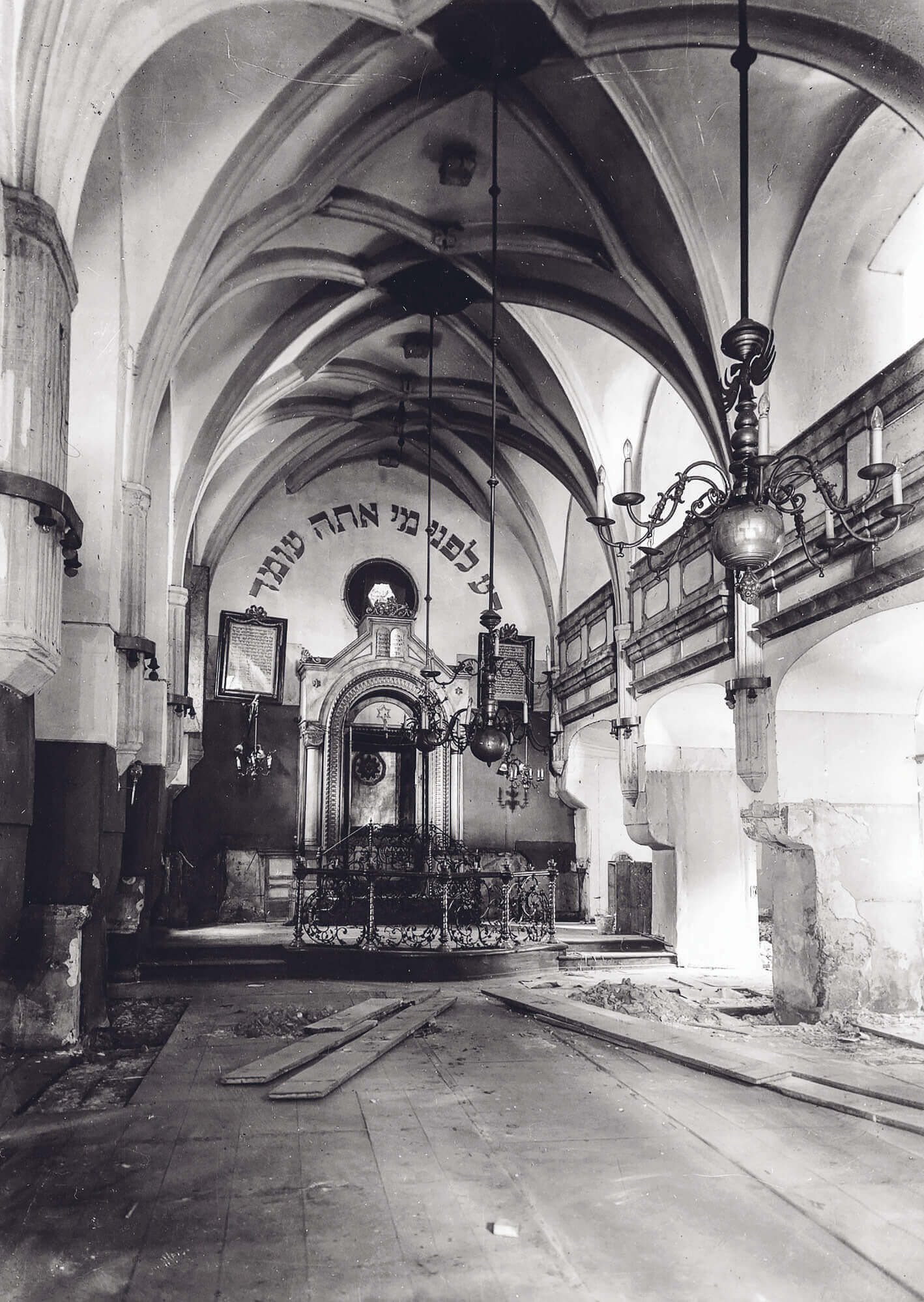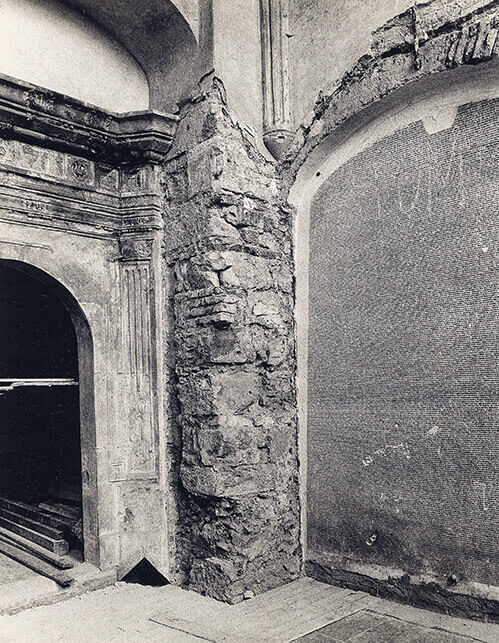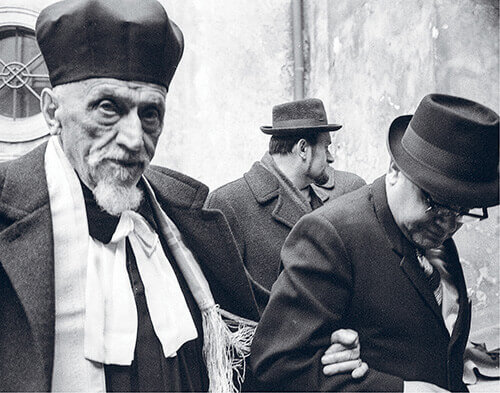Memorial for the Victims of the Shoah from the Czech Lands
In 1950 the Czechoslovak Communist state nationalized the Jewish Museum in Prague and placed the Pinkas Synagogue into its care. An exhibition on the Second World War was to be installed in the synagogue, but the art historian and museum director, Hana Volavková (1904–1985), wanted first of all to ascertain the actual age and architectural history of the building. The synagogue was reconstructed, modern-day alterations were removed, and the surrounding area was modified following an extensive archaeological and historical survey.
Exterior of the Pinkas Synagogue before commencement of reconstruction work in the 1950s.
Jewish Museum in PragueThe idea then emerged to turn the interior of the synagogue into a memorial – a symbolic gravestone – for all the Jewish victims of the Shoah from the Czech lands. More than 78,000 of them vanished without a trace during the war.
When selecting a design for the memorial, Hana Volavková was inspired by similar works at home and abroad. She consulted a number of colleagues as well. In 1954, Professor Josef Kaplický (1899–1962) at the Prague Academy of Art suggested giving the commission to his pupil, the painter Jiří John (1923–1972) and to the latter’s friend, the painter Václav Boštík (1913–2005).
Jiří John and Václav Boštík were among the leading representatives of Czech modern art whose work dealt with spiritual subject matter. It was their contemplative approach that contributed to the uniqueness of the Pinkas Synagogue memorial. They both regarded the memorial as being of equivalent importance to their other achievements.
The interior space was laid out so that the names of all the Shoah victims from the Czech lands could be inscribed on the walls. Each name represents a specific fate, a record of one specific life. After several years’ work, the memorial was completed in 1959 and opened to the public a year later. The Czechoslovak state declared it to be its own accomplishment, although it was not otherwise interested in commemorating the Jewish victims of the Second World War.
When designing the Pinkas Synagogue memorial, Jiří John and Václav Boštík used the graphic means of expression they had employed in their other work. John’s graphic lines and hatch patterning were combined with Boštík’s abstract elements and points that formed the space. Their initial designs for the inscriptions on the synagogue walls were inspired by the shape of a tombstone. To provide more space, they filled the inscription fields with regular lines of text. The final colour scheme that emerged was a distinctive and prominent black-red variant with yellow accents as a reference to the yellow Star of David.
Jewish Museum in PragueThe problem of groundwater rising up through the walls first appeared as early as 1965, which is why the synagogue was closed to the public a year later. In 1968, during restoration work, a discovery was made of a historical mikveh (ritual bath).
In the mid-1960s, the Pinkas Synagogue memorial became a place of quiet contemplation for the victim’s families and for countless visitors from the Czech Republic and abroad who appreciated the atmosphere and solemnity of the space.
Jewish Museum in PragueDue to the problem of rising damp and the discovery of older sections of the building, the State Jewish Museum in Prague set about repairing the synagogue at the end of the 1960s. After the Soviet occupation of Czechoslovakia in 1968, however, the authorities had no desire to restore the memorial to its original state. This is something that could only happen after the fall of the Communist regime in 1989.
Jewish Museum in PragueThe memorial was closed to the public from 1966 onwards. Acts of remembrance for the Jewish victims of the Shoah from the Czech lands were seldom possible after that. In 1969, one such act was held not only by representatives of the local Jewish community, including Rabbi Richard Feder (1875–1970), but also by representatives of the then political class.
Jovan Dezort CollectionThe extensive floods that hit the Czech Republic in 2002 damaged the inscriptions on the walls of the Pinkas Synagogue, which were subsequently cleaned and repaired. The high water mark at the staircase leading from the main nave to the adjacent women’s section shows that the water here reached a height of 120 cm.
Jewish Museum in PragueAfter the Soviet occupation of Czechoslovakia in 1968, the Communist regime, which clearly had antisemitic tendencies, was not interested in restoring the memorial. It was not until the Velvet Revolution in November 1989 that the memorial could reopen. By then, however, most of the original inscriptions had been destroyed. The restoration of the inscriptions was based on the original design by Jiří John and Václav Boštík and was completed in 1995. Additional repairs had to be made as a result of catastrophic flood damage in 2002. Today, the memorial once again serves as a dignified place of commemoration.

























